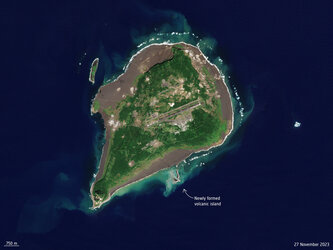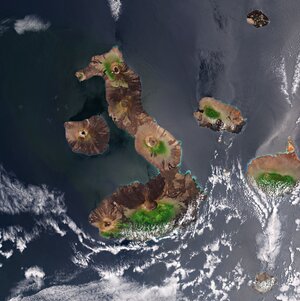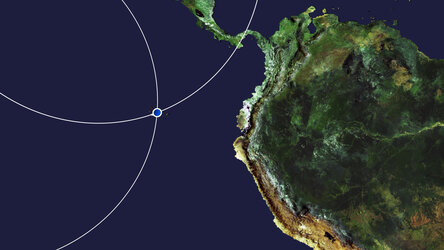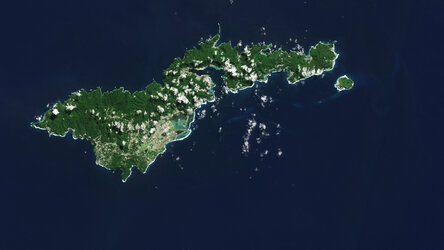Accept all cookies Accept only essential cookies See our Cookie Notice

About ESA
The European Space Agency (ESA) is Europe’s gateway to space. Its mission is to shape the development of Europe’s space capability and ensure that investment in space continues to deliver benefits to the citizens of Europe and the world.
Highlights
ESA - United space in Europe
This is ESA ESA facts Member States & Cooperating States Funding Director General Top management For Member State Delegations European vision European Space Policy ESA & EU Responsibility & Sustainability Annual Report Calendar of meetings Corporate newsEstablishments & sites
ESA Headquarters ESA ESTEC ESA ESOC ESA ESRIN ESA EAC ESA ESAC Europe's Spaceport ESA ESEC ESA ECSAT Brussels Office Washington OfficeWorking with ESA
Business with ESA ESA Commercialisation Gateway Law at ESA Careers Cyber resilience at ESA IT at ESA Newsroom Partnerships Merchandising Licence Education Open Space Innovation Platform Integrity and Reporting Administrative Tribunal Health and SafetyMore about ESA
History ESA Historical Archives Exhibitions Publications Art & Culture ESA Merchandise Kids Diversity ESA Brand Centre ESA ChampionsLatest
Space in Member States
Find out more about space activities in our 23 Member States, and understand how ESA works together with their national agencies, institutions and organisations.
Science & Exploration
Exploring our Solar System and unlocking the secrets of the Universe
Go to topicAstronauts
Missions
Juice Euclid Webb Solar Orbiter BepiColombo Gaia ExoMars Cheops Exoplanet missions More missionsActivities
International Space Station Orion service module Gateway Concordia Caves & Pangaea BenefitsLatest
Space Safety
Protecting life and infrastructure on Earth and in orbit
Go to topicAsteroids
Asteroids and Planetary Defence Asteroid danger explained Flyeye telescope: asteroid detection Hera mission: asteroid deflection Near-Earth Object Coordination CentreSpace junk
About space debris Space debris by the numbers Space Environment Report In space refuelling, refurbishing and removingSafety from space
Clean Space ecodesign Zero Debris Technologies Space for Earth Supporting Sustainable DevelopmentLatest
Applications
Using space to benefit citizens and meet future challenges on Earth
Go to topicObserving the Earth
Observing the Earth Future EO Copernicus Meteorology Space for our climate Satellite missionsCommercialisation
ESA Commercialisation Gateway Open Space Innovation Platform Business Incubation ESA Space SolutionsLatest
Enabling & Support
Making space accessible and developing the technologies for the future
Go to topicBuilding missions
Space Engineering and Technology Test centre Laboratories Concurrent Design Facility Preparing for the future Shaping the Future Discovery and Preparation Advanced Concepts TeamSpace transportation
Space Transportation Ariane Vega Space Rider Future space transportation Boost! Europe's Spaceport Launches from Europe's Spaceport from 2012Latest
Earth from Space: Nishinoshima island, Japan
Thank you for liking
You have already liked this page, you can only like it once!
This Copernicus Sentinel-2 image features the Japanese island of Nishinoshima, in the northwest Pacific Ocean.
Zoom in to explore this image at its full 10 m resolution or click on the circles to learn more.
One of the Ogasawara Islands, Nishinoshima is a small uninhabited volcanic island roughly 1000 km south of Tokyo. Volcanic activity along the western edge of the Pacific Ring of Fire gave rise to this island, which is in fact the tip of a submerged volcano.
Until 1974, only a part of the ridge of the otherwise submerged caldera was visible, and the island was about 700 m long and 200 m wide. Since then, Nishinoshima has experienced alternating periods of explosive activity and calm, but lava from various eruptions over the years has led to the island growing bigger.
This image was acquired in January 2021 and here the island is around 2.3 km in the north-south direction and 2 km in the east-west direction.
The yellowish discolouration of the water around the island is due to volcanic minerals, gas and seafloor sediment that is being stirred up by the volcanic activity. It stretches for about 10 km to the southeast, where ocean currents turn it into bright green swirls.
A plume of gas and steam can be seen rising from the volcano and drifting northeast over the Pacific Ocean. As the plume rises higher, the steam condenses and forms clouds.
Volcanic plumes are of particular concern to the airline industry because ash can contaminate oxygen supplies and damage jet engines. Atmospheric sensors on satellites can identify the gases and aerosols released by eruptions, quantify their wider environmental impact and can help provide early warnings to the aviation industry.
Satellite data can also be used to better understand volcanic activity. Optical and radar instruments can image lava flows, mudslides, ground fissures and earthquakes, and be used to assess damage.
-
CREDIT
contains modified Copernicus Sentinel data (2021), processed by ESA -
LICENCE
CC BY-SA 3.0 IGO or ESA Standard Licence
(content can be used under either licence)

Volcanic island on the rise

Galápagos Islands

Earth from Space: Galápagos Islands

Earth from Space: American Samoa















 Germany
Germany
 Austria
Austria
 Belgium
Belgium
 Denmark
Denmark
 Spain
Spain
 Estonia
Estonia
 Finland
Finland
 France
France
 Greece
Greece
 Hungary
Hungary
 Ireland
Ireland
 Italy
Italy
 Luxembourg
Luxembourg
 Norway
Norway
 The Netherlands
The Netherlands
 Poland
Poland
 Portugal
Portugal
 Czechia
Czechia
 Romania
Romania
 United Kingdom
United Kingdom
 Slovenia
Slovenia
 Sweden
Sweden
 Switzerland
Switzerland
























